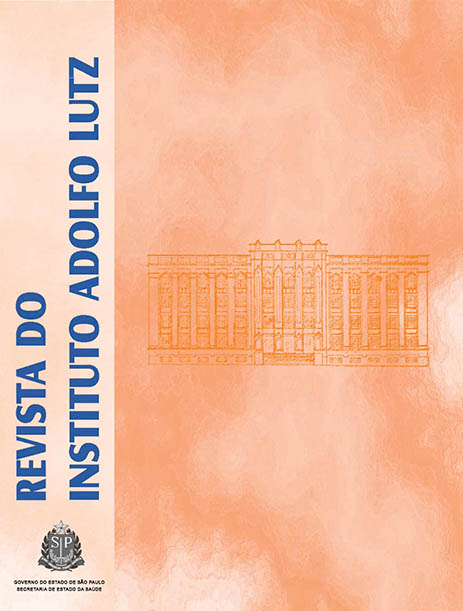Abstract
Rabies virus cryopreservation has been succinctly described in the scientific literature. The major researches about viral conservation emphasize the rabies diagnosis in decomposed samples. For now few information has been available concerning the use of cryoprotectants for rabies virus cryopreservation. This study aimed at assessing the viability of rabies virus after freezing/thawing procedures and investigating the effect of different concentrations of dimethyl sulphoxide (DMSO), glycerol (GLY), polyethyleneglycol (PEG) and sucrose (SUC) on rabies virus cryopreservation. Virus viability was assessed by virus isolation based on mouse inoculation test, titration and immunofluorescent antibody assay before and after 30 days of freezing procedures. The rabies virus samples after being exposed to cryopreservation without adding a cryoprotectant, its viability showed to be lower than that observed in samples exposed to other treatments. After 30 days of freezing procedure, the viability of cryopreserved samples using DMSO, GLY or PEG was lower than that observed in fresh samples. In addition, the use of sucrose at 10% or 68% concentrations induced positive effects on the viral particles viability after a short-term cryopreservation.
References
1. Day JG, McLellan MR. Cryopreservation and freeze-drying protocols. New Jersey: Humana Press; 1995.
2. Paoli DP. Biobanking in microbiology: from sample collection to epidemiology, diagnosis and research. FEMS Microbiol Rev. 2005;29:897-910.
3. Hubálek Z. Protectants used in the cryopreservation of microorganisms. Cryobiol. 2003;46:205-29.
4. Gould EA. Virus cryopreservation and storage. In: Day JG, McLellan MR. Cryopreservation and freeze-drying protocols. New Jersey: Humana Press; 1995.
5. Paynter SJ. Principles and practical issues for cryopreservation of nerve cells. Brain Res Bull. 2008;75:1-14.
6. Howell CL, Miller MJ. Effect of sucrose phosphate and sorbitol on infectivity of enveloped viruses during storage. J Clin Microbiol. 1983;3:658-62.
7. Koprowski H. The mouse inoculation test. In: Meslin FX, Kaplan MM, Koprowski H. (Eds). Laboratory Techniques in Rabies, 4th ed. Geneva: World Health Organization; 1996. p.80-86.
8. Reed LJ, Müench H. A simple method of estimating fifty per cent endpoints. Am J Hyg. 1938;27:493-7.
9. Dean DJ, Abelset MK, Atanasiu P. The fluorescent antibody test. In: Meslin FX, Kaplan MM, Koprowski H. (Eds). Laboratory Techniques in Rabies, 4th ed. Geneva: World Health Organization; 1996. p.88-95.
10. Bingham J, Merwe M. Distribution of rabies antigen in infected brain material: determining the reliability of different regions of the brain for the rabies fluorescent antibody text. J Virol Methods. 2002;101:85-94.
11. Schnell MJ, McGettigan JP, Wirblich C, Papaneri A. The cell biology of rabies virus: using stealth to reach the brain. Nat Rev Microbiol. 2010;8:51-61.
12. Wacharapluesadee S, Ruangvejvorachai P, Hemachuda T. A simple method for detection of rabies viral sequences in 16-year old archival brain specimens with one-week fixation in formalin. J Virol Methods. 2006;134:267-71.
13. Lopes MC, Venditti LLR, Queiroz LH. Comparison between RT-PCR and the mouse inoculation test for detection of rabies virus in samples kept for long periods under different conditions. J Virol Methods. 2010;164:19-23.
14. Fabbri R, Porcu E, Marsella T, Rocchetta G, Venturoli S, Flamigni C. Human oocyte cryopreservation: new perspectives regarding oocyte survival. Hum Reprod. 2001;16:411-6.
15. Chen ZJ, Li M, Li Y, Zhao LX, Tang R, Sheng Y, Gao X, Chang CH, Feng HL. Effects of sucrose concentration on the developmental potential of human frozen-thawed oocytes at different stages of maturity. Hum Reprod. 2004;10:2345-9.

This work is licensed under a Creative Commons Attribution 4.0 International License.
Copyright (c) 2011 Instituto Adolfo Lutz Journal
